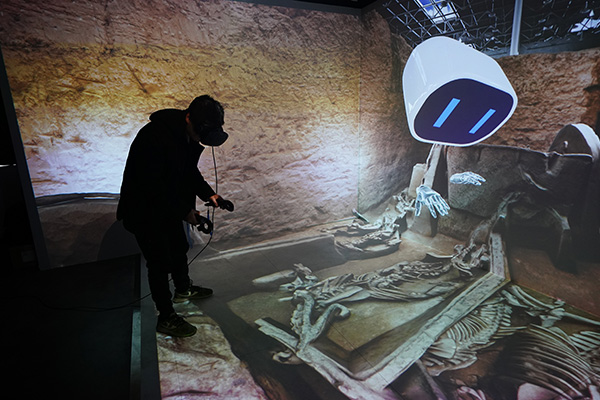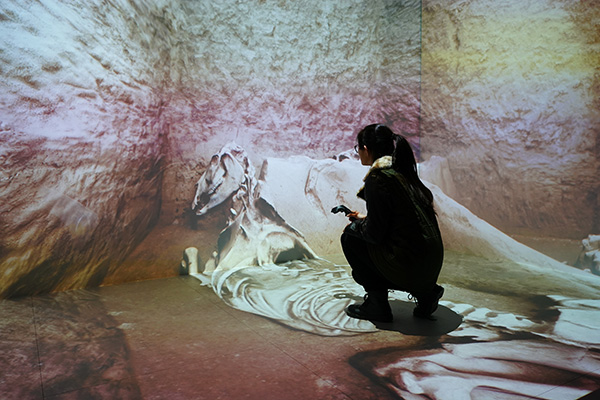



Students at Northwest University can now use VR to visit and explore ruins and tombs while still in classrooms, Lu Hongyan reports in Xi'an.
China's first immersive virtual-interactive teaching laboratory for archaeology was recently built by Northwest University in Xi'an, Shaanxi province, in Northwest China.
Through virtual reality, students at the university can "visit" archaeological sites while sitting in classrooms.
The laboratory was founded with the support of the Tang Zhongying Foundation.
This is the first archaeological teaching lab in a domestic university that uses VR to reproduce archaeological scenes and provide users with immersive and interactive experiences.
In the VR lab, where excavation sites can be reconstructed, students wearing equipment such as VR helmets and goggles can feel as if they are in a location that is being simulated.
They can observe the features of various ruins and grasp the basic procedures and methods of archaeological investigation and excavation.
Archaeology is a discipline that emphasizes the combination of theory and practice. Practice plays a key role.
However, the opportunities for students to participate in practical training and go to archaeological sites or museums are relatively limited.
The traditional two-dimensional classroom-teaching method of using pictures and words also makes it difficult for students to get intuitive experiences.
With the help of VR equipment, students can have a better grasp of the knowledge in books.
"In the immersive virtual-interactive teaching laboratory of archaeology, we can model the actual data collected from ruins and tombs, allowing students to experience them personally," says Ma Jian, deputy head of the School of Cultural Heritage of Northwest University.
"This can help students intuitively understand the characteristics of the different types of relics, describe the texts and pictures in the books more vividly, and gain a more detailed, more intuitive and three-dimensional understanding of them."

Teachers can vividly explain archaeological or historical knowledge in virtual spaces without being restricted by time and space. They can also get field-excavation practice.
One of the advantages of VR is its absolute security. It doesn't damage relics or threaten personal safety.
"This is a major innovation in the teaching methods and concepts of archaeology," Ma says.
Xi Tongyuan, head of the laboratory and a teacher of the School of Cultural Heritage of Northwest University, says that his school planned to introduce archaeology, relics protection and other courses into the system.
"In fact, not only archaeology but also geology, history and other disciplines can use this to enrich teaching," Xi says.
The laboratory makes full use of the advantages of Northwest University in the fields of archaeology, geographic information and computer science.
It extracts and condenses the existing technologies and achievements, draws extensively on the latest research results of digital cultural-heritage protection at home and abroad, and further improves the level of Northwest University in heritage protection and research.
Contact the writer at luhongyan@chinadaily.com.cn
If you have any problems with this article, please contact us at app@chinadaily.com.cn and we'll immediately get back to you.